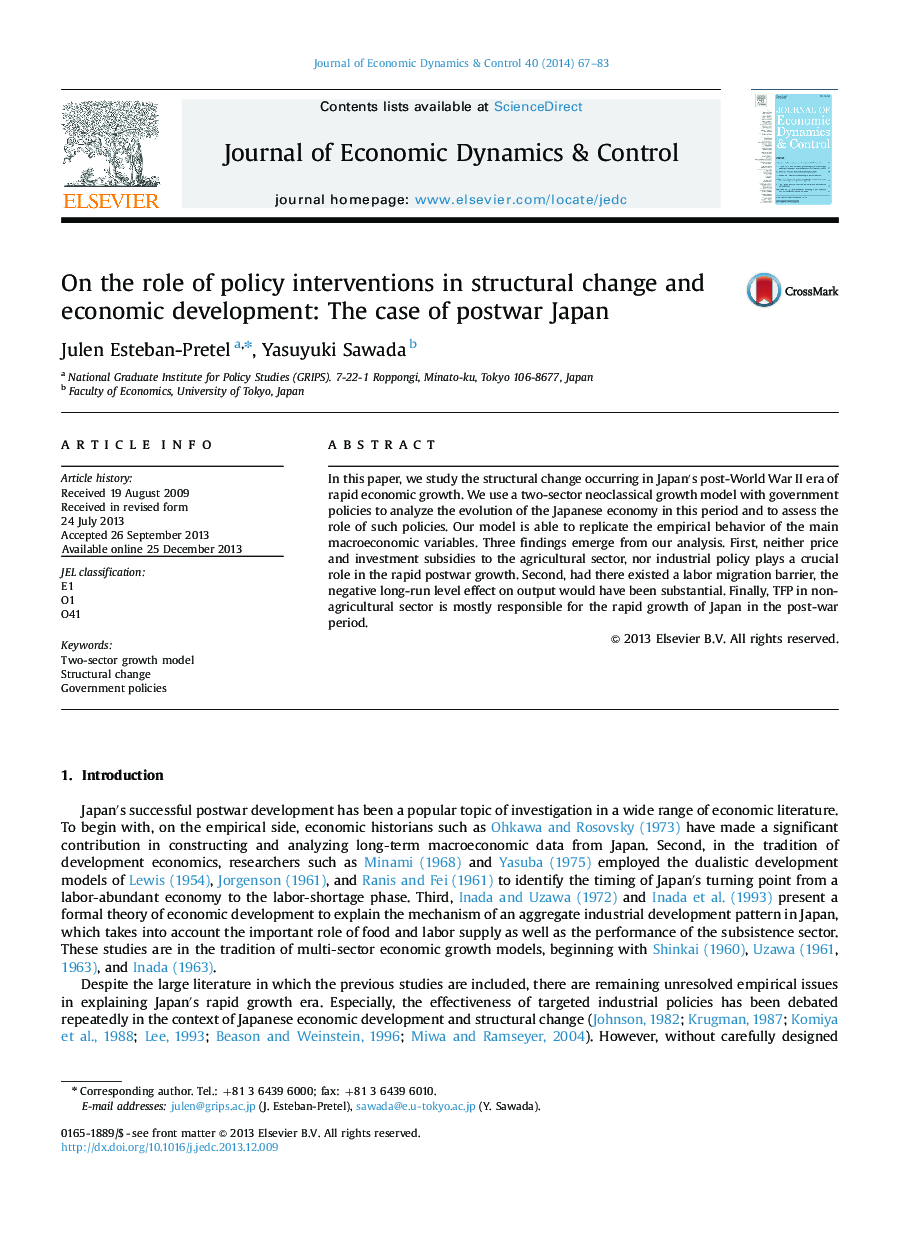| Article ID | Journal | Published Year | Pages | File Type |
|---|---|---|---|---|
| 5098549 | Journal of Economic Dynamics and Control | 2014 | 17 Pages |
Abstract
In this paper, we study the structural change occurring in Japan's post-World War II era of rapid economic growth. We use a two-sector neoclassical growth model with government policies to analyze the evolution of the Japanese economy in this period and to assess the role of such policies. Our model is able to replicate the empirical behavior of the main macroeconomic variables. Three findings emerge from our analysis. First, neither price and investment subsidies to the agricultural sector, nor industrial policy plays a crucial role in the rapid postwar growth. Second, had there existed a labor migration barrier, the negative long-run level effect on output would have been substantial. Finally, TFP in non-agricultural sector is mostly responsible for the rapid growth of Japan in the post-war period.
Related Topics
Physical Sciences and Engineering
Mathematics
Control and Optimization
Authors
Julen Esteban-Pretel, Yasuyuki Sawada,
